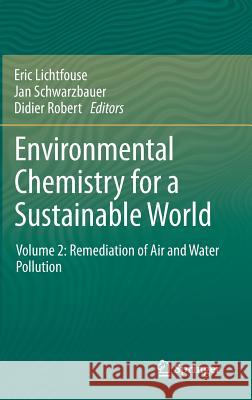Environmental Chemistry for a Sustainable World: Volume 2: Remediation of Air and Water Pollution » książka
Environmental Chemistry for a Sustainable World: Volume 2: Remediation of Air and Water Pollution
ISBN-13: 9789400724389 / Angielski / Twarda / 2011 / 541 str.
Environmental Chemistry for a Sustainable World: Volume 2: Remediation of Air and Water Pollution
ISBN-13: 9789400724389 / Angielski / Twarda / 2011 / 541 str.
(netto: 573,71 VAT: 5%)
Najniższa cena z 30 dni: 578,30
ok. 22 dni roboczych.
Darmowa dostawa!
Environmental chemistry is a fast developing science aimed at deciphering fundamental mechanisms ruling the behaviour of pollutants in ecosystems. Applying this knowledge to current environmental issues leads to the remediation of environmental media, and to new, low energy, low emission, sustainable processes. Chapters review analysis and remediation of pollutants such as greenhouse gases, chiral pharmaceuticals, dyes, chlorinated organics, arsenic, toxic metals and pathogen in air, water, plant and soil. Several highlights include the overlooked impact of air pollutants from buildings for health risk, innovative remediation techniques such as bioreactors for gas treatment, electrochemical cleaning of pharmaceuticals, sequestration on Fe-Mn nodules, phytoremediation and photocatalytical inactivation of microbial pathogens. This book will be a valuable source of information for engineers and students developing novel applied techniques to monitor and clean pollutants in air, wastewater, soils and sediments.
Environmental Chemistry is a fast emerging discipline aiming at understanding the fate of pollutants in ecosystems and at designing novel processes that are safe for humans and ecosystems. Past pollution should be cleaned. Future pollution should be predicted and avoided. Chapters review nanotechnology for energy, detection and remediation; health risk caused by endocrine disruptors and heavy metals, and applied techniques to clean water, soil and air. Uncommon but visionnary topics include social chemistry, chiral pharmaceuticals and DDT, and geochronology of pollutants.











